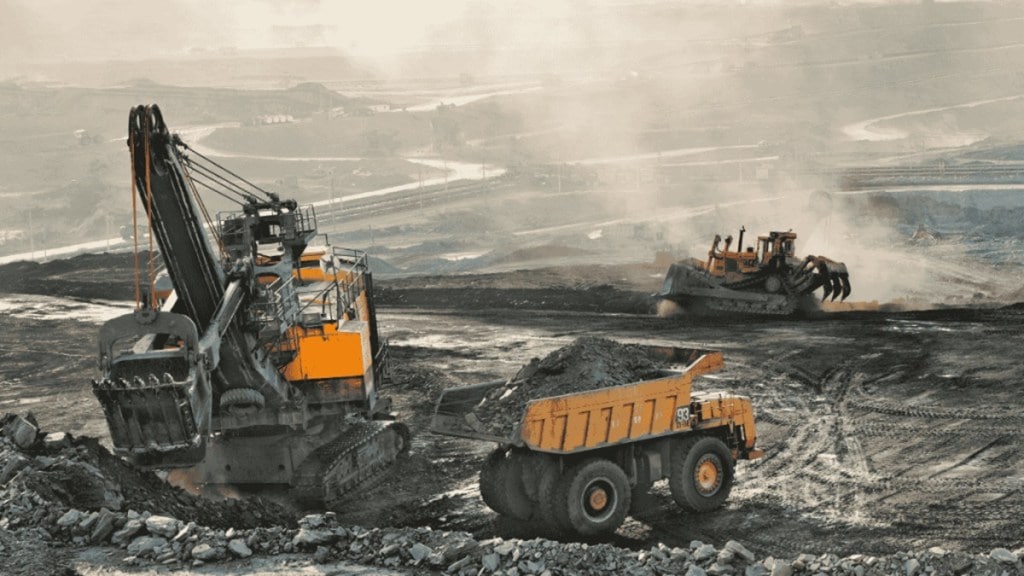By Harsha Vardhan Agarwal
Rare earth magnets are essential for the world’s net-zero transition. They mark the future of India’s energy transition with critical applications in electric vehicles (EVs), electronics, and renewables. They are the cornerstones of a clean, connected, and secured (supplies) future.
The recent export restrictions by China on seven rare earth elements and magnets necessitates fast-tracking of the pursuit of a strategic and self-reliant rare-earth value chain in the country. Approximately 90% of the global production supplies are concentrated in China. It would be difficult for our domestic industries to sustain the supply squeeze or fluctuations for rare earth magnets beyond a period of few weeks. While the immediate fallout may be manageable due to the existing inventories and alternative suppliers, the real solution lies in building robust domestic capabilities to insulate India from such shocks.
Other countries are rushing to secure or diversify their supplies of rare earth magnets or boost their own production. In US, federal agencies have been asked to streamline permissions and accelerate the development of mineral projects while invoking the Defense Production Act to prioritise and fund the mining and processing of critical minerals on public lands. The US recently signed a memorandum of cooperation on critical minerals with Saudi Arabia, alongside a memorandum of understanding that was signed between US and Saudi firms to advance a complete mine-to-magnet rare earth supply chain. Similarly, in Malaysia, the government has formulated a National Advanced Materials Technology Roadmap 2021-2030 to catalyse the development of the country’s advanced materials industry ecosystem.
India has identified this as a priority area and needs to move fast to tap its resources. In her FY25 Budget speech last year, Union finance minister Nirmala Sitharaman announced the setting up of a Critical Mineral Mission for domestic production, recycling of critical minerals, and overseas acquisition of critical mineral assets.
In India, rare earth element resources are primarily found in monazite, which are found in coastal beach and inland placer deposits, distributed across five states, namely Andhra Pradesh, Odisha, Tamil Nadu, Kerala, and West Bengal. Smaller deposits are also located in Jharkhand, Gujarat, and Maharashtra. Rare earth resources in India are reported to be the fifth largest in the world. While the country is rich in terms of reserves (6.9 million tonnes of rare earth elements), it remains lacking in capacity when it comes to refining and magnet manufacturing. India’s share in global reserves is around 6% but its share in mining is less than 1%. Also, India’s resource is significantly lean with respect to grade and it is tied with radioactivity, making the extraction process long, complex, and expensive.
India’s reserves of rare earths remain underutilised due to gaps in exploration, mining, refining, and downstream processing capabilities. While the country has laid a foundation for a rare earth ecosystem through institutions like the Indian Rare Earths Limited and research initiatives, the complete end-to-end supply chain — from resource extraction to rare earth magnet manufacturing — remains underdeveloped. The production ecosystem till date has largely focused on low-value applications. Also, the current legal framework (Atomic Energy Act, 1962, and the associated rules thereof) restricts rare earth mining to public sector entities, and private sector participation is absent due to regulatory constraints. This significantly limits the scale and speed at which extraction activities can be expanded. Expanding mining and scaling up refining technologies for rare earth elements and rare earth metals will be crucial. Also, India must transition from simply producing rare earth oxides to value-added products like rare earth metals. This would require significant investments in research and development, collaboration with global technology leaders, and the establishment of specialised manufacturing zones.
Diversification of raw material sources would be the key to supply chain security.
India is deepening its partnerships with other countries. Australia is an important ally in reducing reliance on China, also considering our recently signed trade deal. Australia is currently the world’s fourth-largest producer of rare earth elements and is actively expanding its domestic processing capabilities. Besides the conventional and emerging sources, e-waste recycling represents another important frontier in the rare earth element value chain. Tapping into urban mining presents a dual opportunity for the country, ensuring security of resource and environmental protection.
To convert this strategic challenge into an opportunity, the Federation of Indian Chambers of Commerce and Industry (FICCI) suggests the following six actions:
Like the National Green Hydrogen and Critical Minerals Missions, a focused Rare Earth Magnet Mission can drive inter-ministerial coordination, attract investments, and set clear targets for the creation of a domestic value chain.
Establishing dedicated rare earth element technology innovation hubs in partnership with premier institutions like Indian Institutes of Technology, Indian Institute of Science, and Council of Scientific and Industrial Research to develop indigenous know-how for refining and magnet production.
Extending performance-linked incentives for rare earth extraction and full value chain including alloys, magnets, and recycling.
Incentivising urban mining and recycling of used magnets from e-waste, electric vehicles, and old industrial equipment can become an important secondary source.
Engaging with countries such as Australia, Japan, the US, Russia, Vietnam, Brazil, and South Africa for joint ventures in mining, technology transfers, processing, and advanced magnet manufacturing.
Early creation of special economic zones dedicated to rare earth element and magnet production, through streamlined land acquisition, policies enabling private sector participation under strong regulatory oversight.
With focused investments, global alliances, and innovative policymaking, India can transform from a net importer to an active leader in the rare earth space powering the vision of a green and developed India by 2047.
The writer is president, FICCI, and vice chairman & MD, Emami Limited.
Disclaimer: Views expressed are personal and do not reflect the official position or policy of FinancialExpress.com. Reproducing this content without permission is prohibited.

